Forest bathing – 9 ideas to turn your garden into a meditative retreat
Bring the restful principles of forest bathing to your outdoor space with top advice from shinrin-yoku practitioners and landscape designers
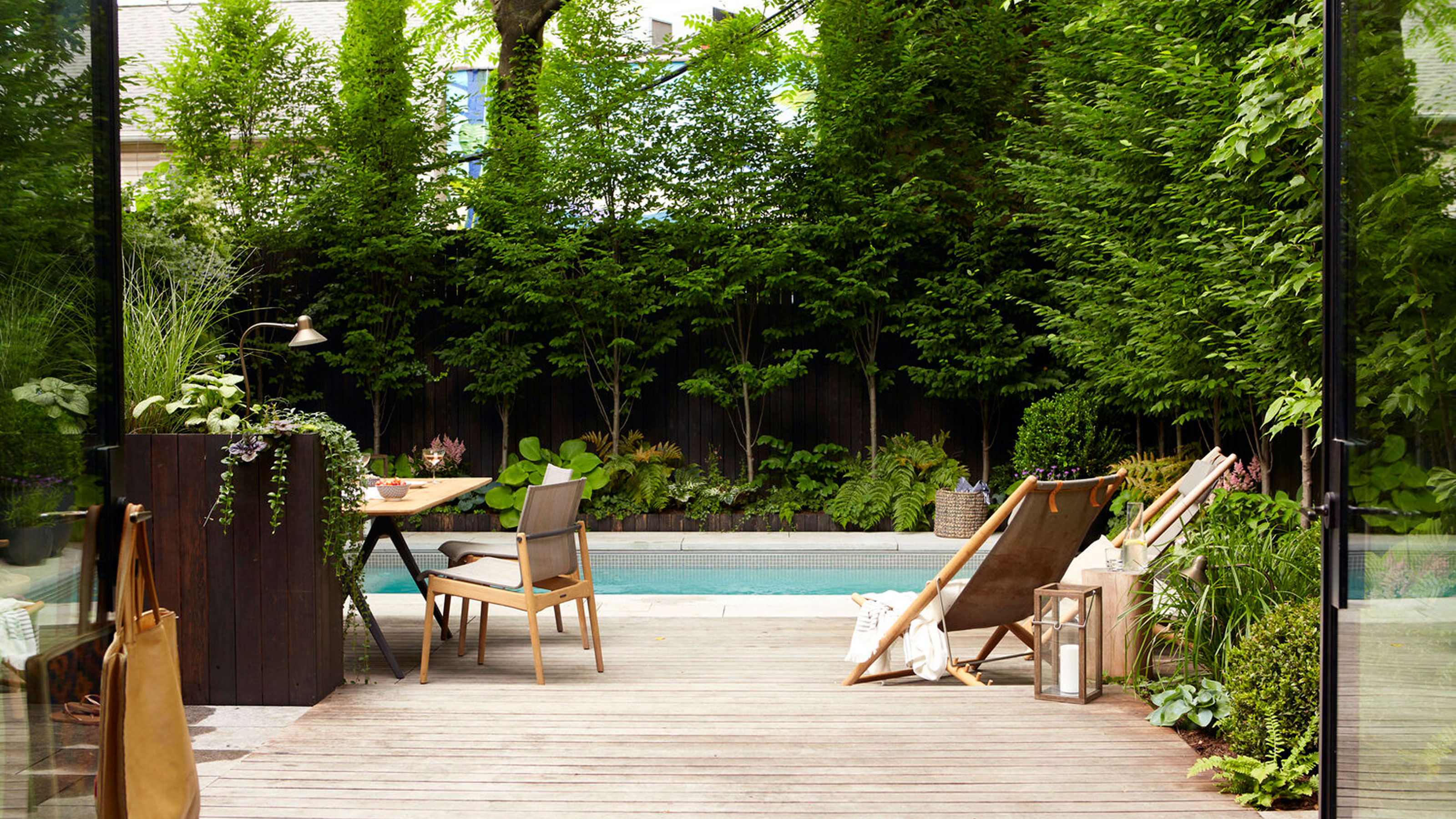

Forest bathing may have entered the world's lexicon much in the same way that much-hyped Scandinavian imports like hygge and lagom did, but beyond its image as an aspirational lifestyle, there's some real weight behind the benefits it could offer you.
Originating from Japan, where it's known as shinrin-yoku, the philosophy's effect on both your health and mental wellbeing has been the subject of studies that confirm what we really already know. Spending time outdoors is good for you. It's why so many people always prioritize walking in woodlands or creating backyard ideas that encourage them to spend time outside.
'Shinrin-yoku translates best as immersing in the forest atmosphere for health and well-being,' explains Gary Evans, director of the Forest Bathing Institute, 'spending mindful time under the canopy of trees to release stress.'
While you might already do plenty of that, there's a difference in intent to consider when thinking about forest bathing, Gary suggests. 'The difference between forest bathing and other outdoor activities is the main purpose of the activity is appreciating the natural environment and beauty of nature – this is the primary reason for your time spent in nature.'
There's a purposefulness to forest bathing then, that causes pause for thought. If there's value in dedicating time to this connection to nature, shouldn't the design of our outdoor spaces reflect that? Taking the principles of forest bathing as our cue, we asked landscape designers and experts for their best advice for creating a garden that will give you a chance to immerse yourself in the meditative qualities of nature.
How to design a garden that's perfect for forest bathing
Forest bathing is certainly more about how you approach it than where you are. So how do you actually practice shinrin-yoku?
'Go out into the garden and focus on being mindful while using the senses to appreciate the natural beauty present,' says Gary of the Forest Bathing Institute. 'Beauty isn’t just pretty flowers. When we pay close attention to nature, we can understand the intricacies of the finer detail; this could be a leaf or a fallen twig.'
'Kids use this approach; our toddler can get lost studying the diversity of bumps on an acorn cap. Have fun with it, be playful and curious, move slowly and leave the phone indoors; you will be surprised at the result.'
As adults, the pulls on our attention are a little more taxing however, so the right set-up in your garden can help to offer focus, whether that's for forest bathing, yoga or general meditation.
1. Make spaces to spend more time outdoors
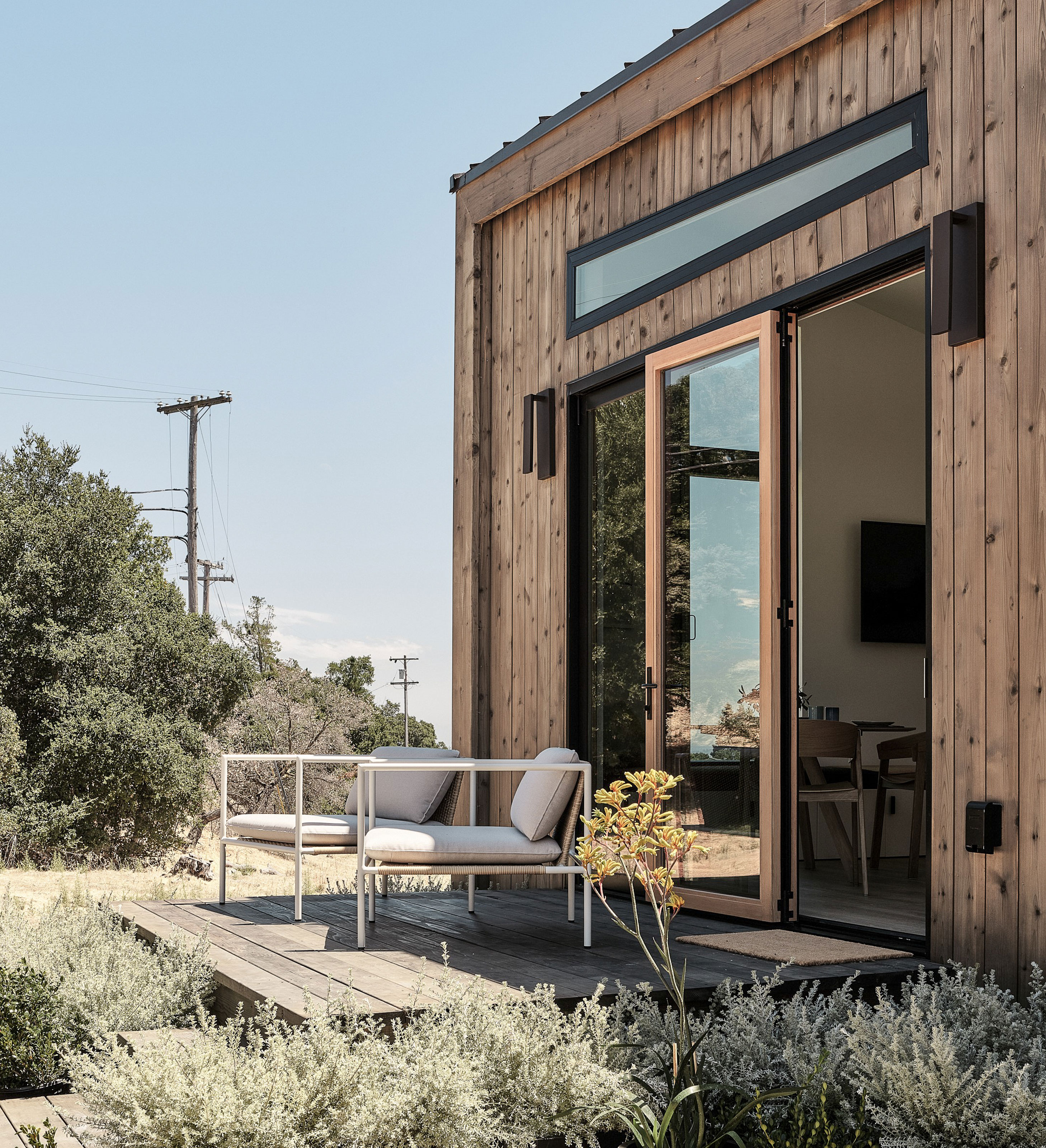
There's a small hurdle to overcome before starting your forest bathing journey - the conspicuousness of just being outdoors for no obvious reason. It's not something that everyone will even think about, but if you can't imagine yourself simply taking yourself outside for a meditation session, designing a garden that encourages you to spend time outside is a good place to start. Venturing into forest bathing is easier if you're already in the right place.
Regardless of whether you take on the full shinrin-yoku experience, these relaxing garden spaces have become a staple of outdoor living of late. 'In recent years, I have had requests to design a space for the client to practice alfresco yoga, private reading nooks as well as opportune spots for a morning cup of coffee or evening glass of wine,' explains landscape designer Alexandra Noble.
This is where you can make use of landscaping to create discrete areas of your outdoor space. Installing deck ideas throughout your outdoor space, for example, can help to form pockets dedicated to certain tasks, and could even be used to design in a specific area for meditation or yoga.
2. Incorporate planting ideas that recreate the forest experience
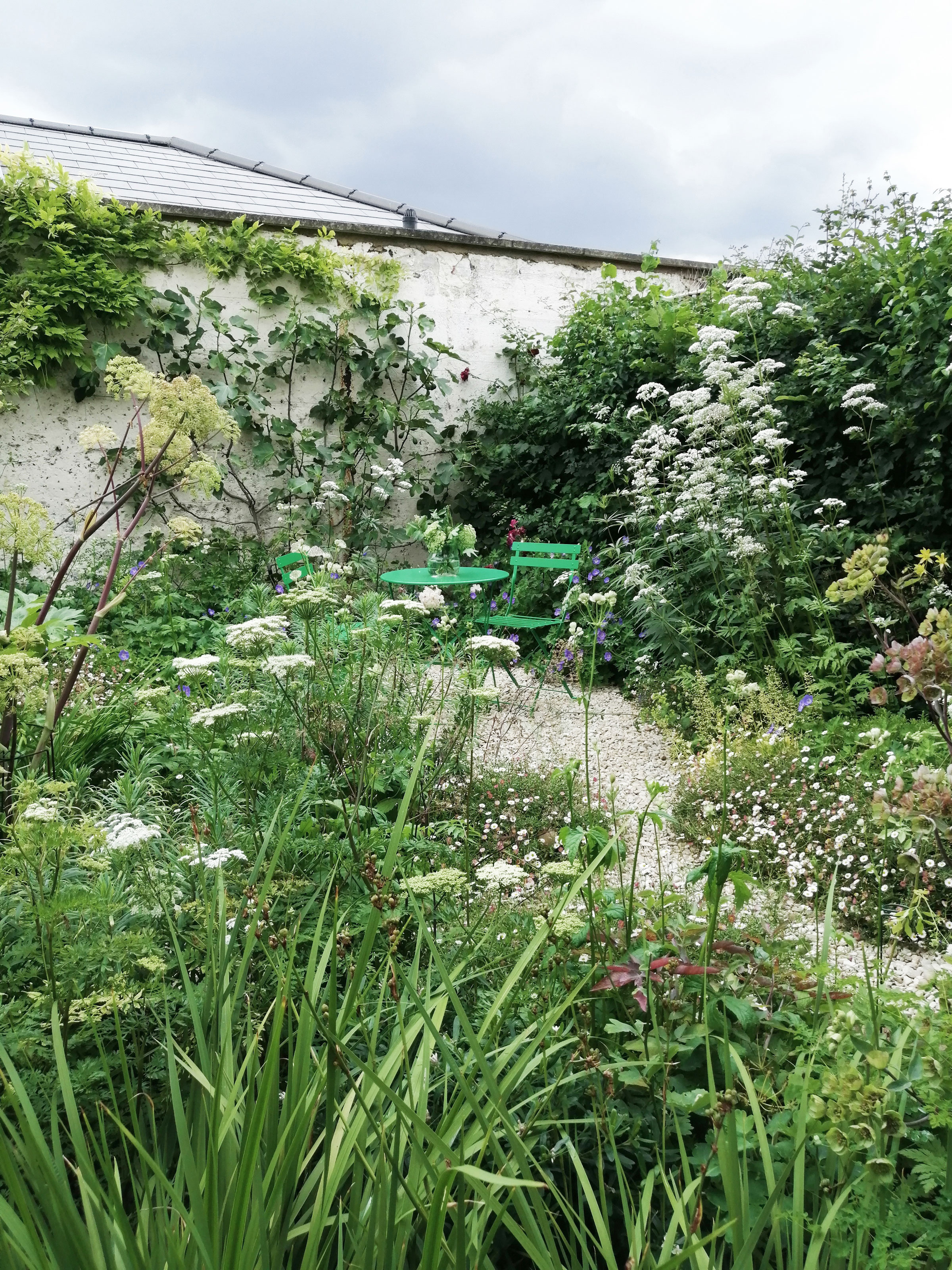
The forest bathing experience is all about immersing yourself in nature – something you should try to recreate with the planting in your meditation garden. 'Consider planting the boundary with a hedge which will provide privacy and also lend the space a far more natural aesthetic,' suggests Alexandra. 'I favor hawthorn, beech or a native-mix.'
Tree landscaping ideas can also play a part in recreating the forest on a smaller scale. 'Multi-stem trees will also add a sense of height and immersion, and the form of the trunks appear less contrived and formal than standard, half standard and topiary specimens,' Alexandra says.
'Also try to be as generous as possible with the size of planting beds to enable you to plant a mix of shrubs, perennials and bulbs. Plant a range of different height plants to ensure the space looks layered and not too one-dimensional'
3. Design private spaces into your garden

There's a biophilic design principle called prospect and refuge theory that's worth getting to grips with for your garden design. Basically, it suggests that you can't ever really relax if you're in a spot that's potentially overlooked. That's why incorporating privacy and screening into your space, in the right areas, is so important.
However, surrounding yourself in privacy fences isn't the ideal when you're aiming for full forest immersion. Instead, try some soft landscaping options to create screening.
'Tall perennials can provide screening for outdoor seating areas as they will often be at their peak when you will be most inclined to sit outside,' says designer Alexandra Noble. 'Try Valeriana officinalis or Thalictrum delavayi for an informal aesthetic. You could also look at using shrubs such as Philadelphus ‘Belle Etoile’ which only reaches a height of 1.5m or Daphne x transatlantica ‘Pink Fragrance’ which only grows to 1m in height and spread.'
'Another option is to consider a pergola which will provide semi-privacy depending on louvre placement and you can also train plants up the structure,' Alexandra suggests.
4. Focus on a minimalist, natural garden design
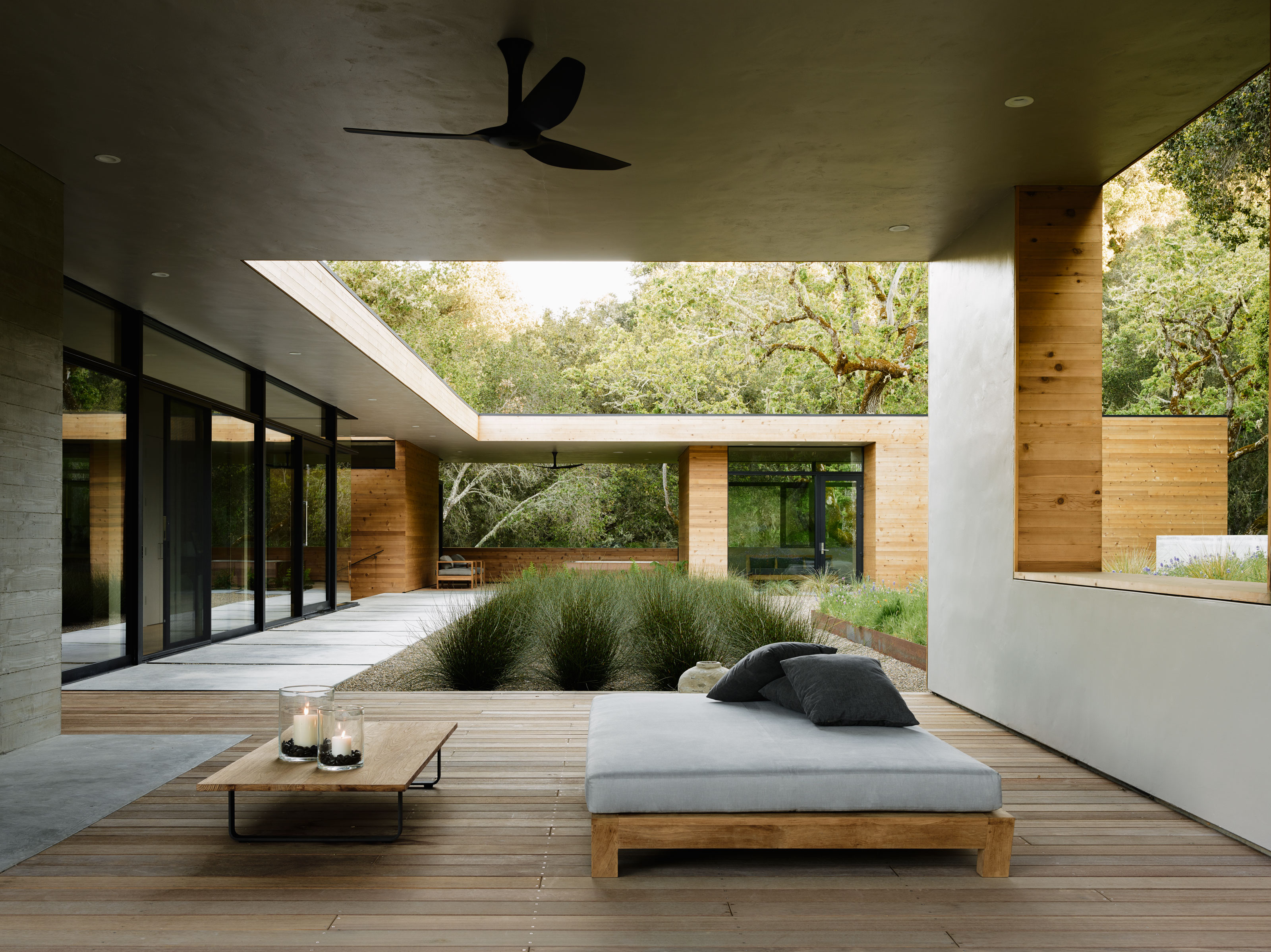
To give your focus to nature, consider designing a garden that doesn't compete for your attention.
'There is an almost minimalist approach to composition of the most successful meditative spaces I’ve come across so when planning the layout of your space, remember to keep it simple,' says Alexandra.
Look to naturally minimalist styles, like Japanese garden ideas, for inspiration, and consider not only the planting, but the materials you use too.
'It's crucial to ensure the materials are cohesive and limited to a maximum of three different materials (for example timber, gravel and stone),' suggests Alexandra. 'I find limiting the material palette ensures the design evokes calm and ensures the garden doesn’t look overly busy or chaotic.'
'Designing a planting scheme for a peaceful garden is a real treat. For my clients, I will tend to opt for plants with a subtle fragrance as well as incorporating plenty of white flowers. Rosa ‘Desdemona’ and Lavandula ‘Arctic Snow’ fit this brief perfectly.'
5. Make your garden comfortable to spend time in
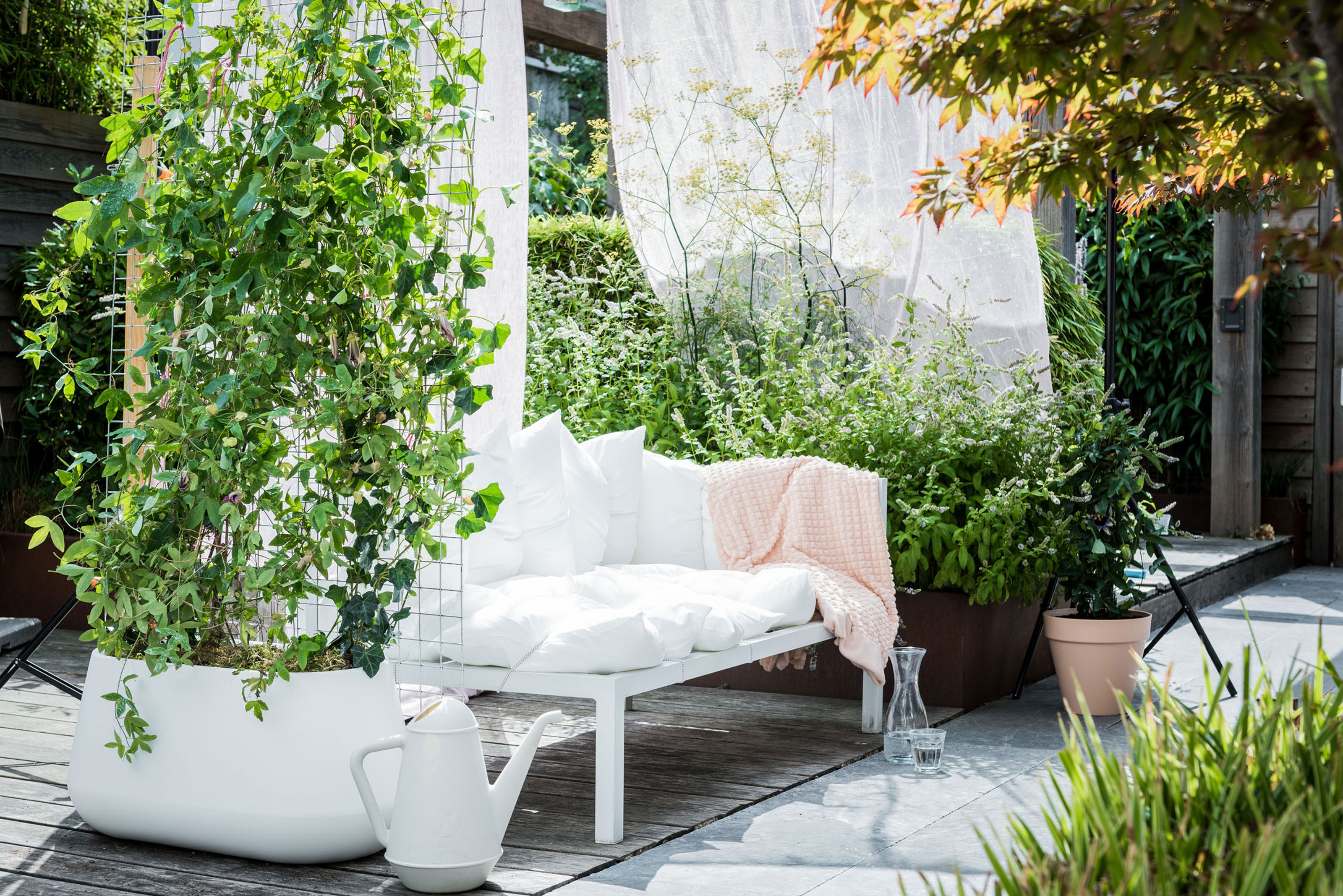
To be motivated to spend any sort of significant time outdoors, comfort is key. Creating comfort isn't just a question of the best garden furniture you can buy, and more about having the right spaces to inhabit. Is the seating right for how you want to spend your time outside? Have you created an area where you can linger in the most inspiring parts of your garden?
Fortunately, this is something that can always be added in retrospectively to a garden as the need arises, and it's easy enough to supplement outdoor seating with textiles and cushions from indoors if space is tight for storage outdoor cushions.
Also consider natural ways to increase comfort. Sitting on grass, or feeling grass under bare feet, is a great way to create a physical connection to nature, so consider your options before choosing to pave over your entire outdoor space.
6. Consider an outdoor shower or bath

Water is inextricably linked with the outdoors, and there's something incredibly meditative about being immersed in water while experiencing nature. Outdoor showers have become much more mainstream for homes, and not just in locations with fair climates year-round.
Yes, they're practical for pool deck ideas, and can help cool you down in cool weather, but they also offer a moment of stillness where you stand, or sit and take in your surroundings. An outdoor shower or bath could be your gateway into some shinrin-yoku – the most literal version of forest bathing.
Outdoor showers require some planning, as they may need you to run new services to it. There are easier to install DIY versions of outdoor showers using a standard outdoor water connection, but unless you're in a desert state, you might prefer a shower with hot and cold functionality too.
7. Encourage wildlife into your garden

Some sounds in the garden won't distract you but rather ground you in nature.
'Creating a space conducive to life and diversity can bring great joy and be a feast for the senses and attention,' says Gary Evans from the Forest Bathing Institute. 'Listen to happy birds when the sun comes out. Do you feel happy too?'
'Consider rewilding an area of your garden to encourage a greater range of insects, birds, and wild plants and flowers. Do not underestimate the joy and potential surprises handing over a garden corner for mother nature to tend can bring. Our natural curiosity thrives on diversity; you can quickly introduce new sensory experiences using this method.'
Once you've put your wildlife gardening ideas into practice, create a quiet place to sit and observe the diversity that arrives. 'Enjoy the space through the seasons; forming a connection to nature is about all seasons; watch the natural cycles unfold and the variety the seasons bring,' Gary suggests.
8. Add a water feature
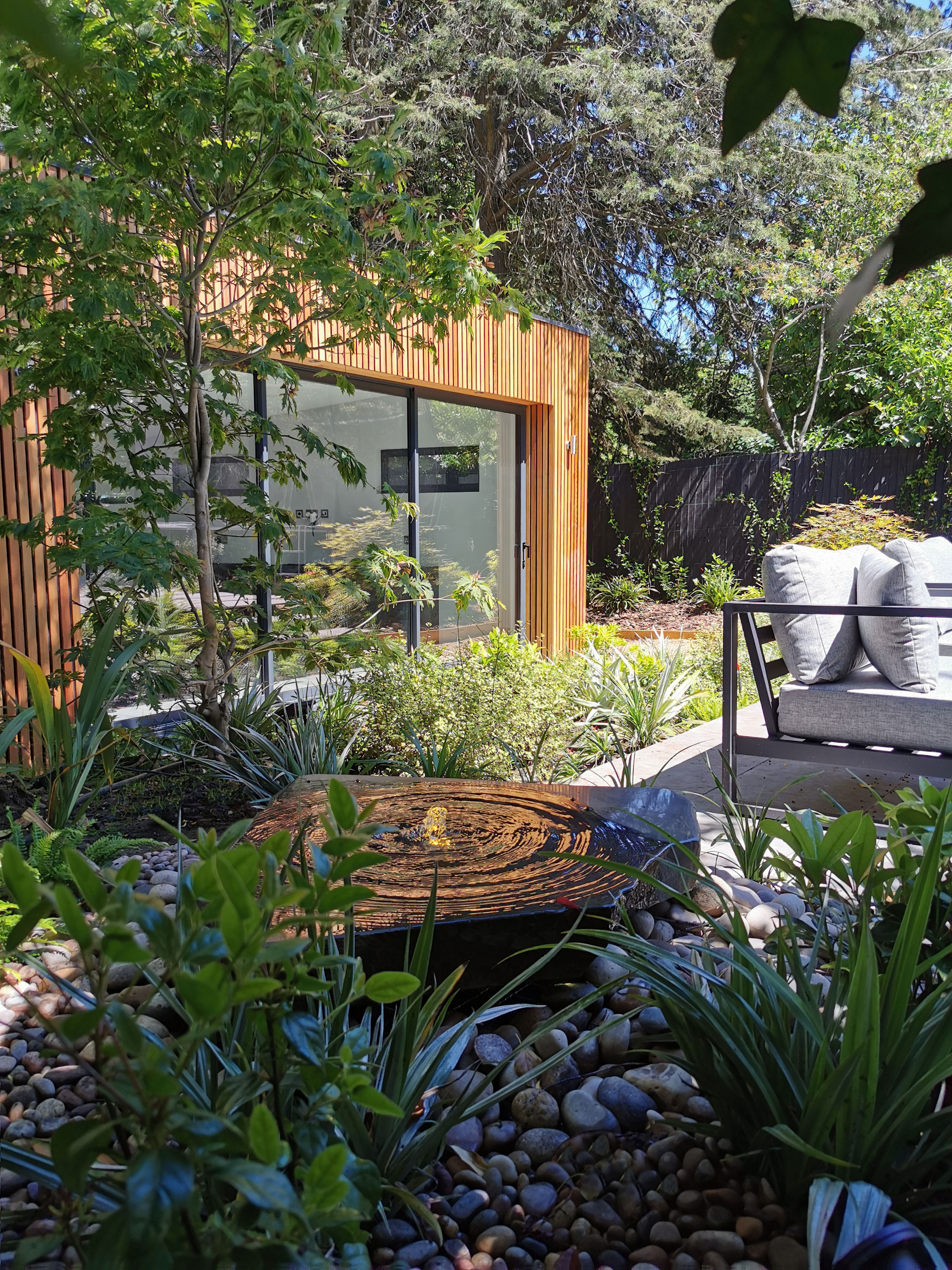
Water is another biophilic noise that fosters a connection to nature, but one over which you can have a little more control.
'I always try to encourage clients to use water in their gardens even if it’s the simplest water bowl,' says garden designer Georgia Lindsay. 'It’s transformative in any garden but especially as urban gardening ideas in environments where we need to mask noise from neighboring gardens and the hum of the city.'
'The gentle trickling sound of water instantly pulls the focus away from distant sounds and centers you within your garden,' she explains.
'A water feature needn’t be anything elaborate, it can be a small trough or container with a basic pump to circulate the water. The bubbling pool will resonate with its soothing qualities drawing you in.'
9. Make it a tech-free zone
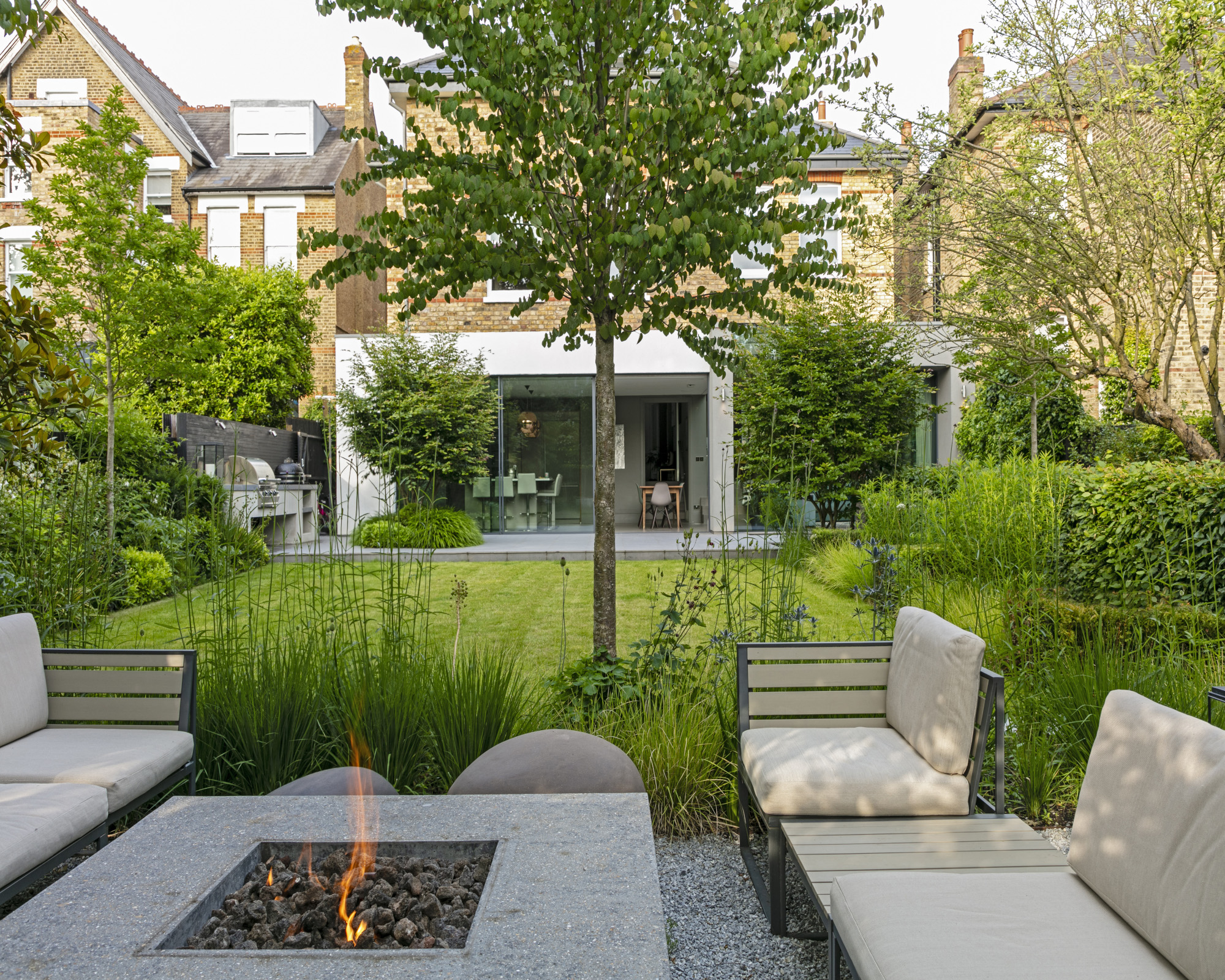
Nowadays, technology can be used to help us get to grasp with abstract ideas like meditation. 'Practising mindfulness skills indoors using popular apps like headspace is a great way to be more present in the garden,' suggests Gary.
However, in general, tech can be an attention-stealer against which we have very little willpower. Imagine you go ahead and install a garden TV in your new yard – how much do you think that would distract from time spent smelling the metaphorical roses of your outdoor space?
When entering the forest bathing zone, consider leaving your phone indoors, so that you can give your garden your full attention for a small period of the day.
What are the benefits of forest bathing?
Forest bathing has many of the same benefits prescribed to biophilic design ideas. These relate to both symptoms of physical health and mental health.
A study by the Forest Bathing Institute found that when undertaking some of their forest bathing activities, participants registered higher levels of feeling safe and relaxed, feeling compassion for others and lower mood disturbances such as depression, anger, tension, confusion and fatigue.
Fostering a connection with nature is also linked to pro-environmental attitudes, especially with children, so is a great way to help raise a new eco-conscious generation.
Be The First To Know
The Livingetc newsletters are your inside source for what’s shaping interiors now - and what’s next. Discover trend forecasts, smart style ideas, and curated shopping inspiration that brings design to life. Subscribe today and stay ahead of the curve.

Hugh is Livingetc.com’s editor. With 8 years in the interiors industry under his belt, he has the nose for what people want to know about re-decorating their homes. He prides himself as an expert trend forecaster, visiting design fairs, showrooms and keeping an eye out for emerging designers to hone his eye. He joined Livingetc back in 2022 as a content editor, as a long-time reader of the print magazine, before becoming its online editor. Hugh has previously spent time as an editor for a kitchen and bathroom magazine, and has written for “hands-on” home brands such as Homebuilding & Renovating and Grand Designs magazine, so his knowledge of what it takes to create a home goes beyond the surface, too. Though not a trained interior designer, Hugh has cut his design teeth by managing several major interior design projects to date, each for private clients. He's also a keen DIYer — he's done everything from laying his own patio and building an integrated cooker hood from scratch, to undertaking plenty of creative IKEA hacks to help achieve the luxurious look he loves in design, when his budget doesn't always stretch that far.
-
 Biophilic Decluttering — What to Take Out of Your Home (and What to Put in) for a More Natural Home
Biophilic Decluttering — What to Take Out of Your Home (and What to Put in) for a More Natural HomeTry your hand at biophilic decluttering to ground your interiors, connect to the environment, and cure chronic clutter in one go. Here's how.
By Amiya Baratan
-
 10 Arrestingly Beautiful Milan Restaurants Locals *Actually* Dine at — Selected for Their Interiors
10 Arrestingly Beautiful Milan Restaurants Locals *Actually* Dine at — Selected for Their InteriorsBrought to you by our community of culture insiders, this edit of the best restaurants in Milan sees authentic Italian food and immersive design unite
By Gilda Bruno